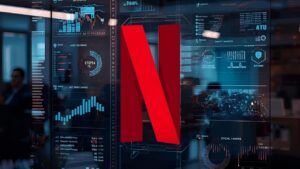Shell’s top US executive said sudden federal halts of fully permitted offshore wind projects are eroding the predictability investors need to finance long-duration energy assets.
Colette Hirstius, president of Shell U.S., said the moves are “very damaging” to investment because they undercut the basic premise that projects which clear all regulatory hurdles can move into construction.
She made the comments in an interview with the Financial Times, which first reported them.
Her remarks land at a delicate moment for US offshore wind. Developers already face higher equipment prices, shipping bottlenecks, and a more conservative lending environment.
Layering regulatory reversals on top of those pressures has made project economics harder to underwrite, according to bankers and developers.
When rules and approvals shift after capital has been committed, the cost of equity rises, lenders shorten tenors, and suppliers demand stronger protections. That chain reaction can stall projects that otherwise would have advanced.
The sector’s legal and policy backdrop has been unsettled for weeks.
A federal judge in late September allowed Ørsted’s nearly finished Revolution Wind project off Rhode Island to resume work after a stop-work order from Washington, a ruling that underscored the stakes for developers that had already arranged financing and mobilized vessels.
The court called the government’s explanations for the halt contradictory and issued a preliminary injunction.
Hirstius’s core point is not simply about wind, large energy projects of any kind depend on multi-year planning and stable ground rules to attract capital.
Shell remains one of the biggest offshore oil producers in the Gulf of Mexico, and Hirstius has welcomed steps that improve clarity for that business.
But she warned that whiplash in one corner of the energy system spills into others, since investors compare opportunities across portfolios.
If policy can nullify permits after the fact, the risk premium can expand across assets from power generation to pipelines.
The warning also follows Shell’s own retrenchment from a flagship US offshore wind venture.
The company exited the Atlantic Shores project off New Jersey this year after concluding the returns no longer stacked up under prevailing costs and policy risks, taking an impairment of roughly $1 billion tied to the investment.
Atlantic Shores, a joint venture with EDF Renewables, has since sought to reset parts of its commercial framework while saying it still intends to progress development.
Shell has indicated it will be more selective on renewables that require heavy subsidies or carry unpredictable policy exposure, while continuing to back projects with clearer line of sight to cash flow.
The financing model for offshore wind depends on vast up-front capital that is recovered over decades through power sales.
Interruptions after final approvals not only delay cash generation but can blow through construction milestones embedded in debt covenants and supply contracts.
Every month a turbine installation vessel sits idle adds costs that must be recouped from either taxpayers, ratepayers, or shareholders. If such risks become routine, fewer sponsors will bid on leases, and those that do will demand higher returns.
There are signs of both resilience and recalibration, several coastal states are working on revised offtake structures that better reflect current interest rates and supply costs.
Some developers have pivoted toward repowering onshore fleets or grid-scale batteries that face fewer maritime and Jones Act constraints.
Meanwhile, the court victory for Revolution Wind suggests that projects far along in construction can still find protection in the courts when agencies reverse course without sufficient rationale.
The company continues to invest heavily in US hydrocarbons, where leasing schedules and permitting frameworks are familiar to capital providers.
But the United States also wants more clean power on the grid. Squaring those ambitions with bankable rules will determine how quickly private money returns to offshore wind and related supply chains.




















